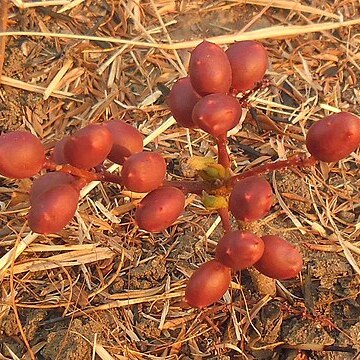Leaves 3–7-foliolate, rarely 1-foliolate, up to about 30 cm. long; petiole and rhachis 3 (in the 1-foliolate leaves)-26 cm. long, flattened or slightly canaliculate on the upper side, stellate-tomentose in the juvenile state, later glabrescent; young leaflets elliptic, acute, densely tomentose on both surfaces, with the reticulation invisible, the adult ones discolorous, 9–20 × 4–12 cm., elliptic, oblong-obovate, ovate to subcircular, obtuse to widely acuminate at the apex, rounded or somewhat cuneate at the base, rigid or coriaceous, glabrescent or almost glabrous on the upper surface, ± persistently tomentose or glabrescent below, petiolulate, the petiolules compressed, canaliculate, the terminal one 0·5–5 cm. long, the lateral ones up to 0·4 cm. long; midrib sunk or slightly raised above, strongly prominent beneath, lateral nerves (7)8–10 on each side, visible above, raised below, reticulation: ± visible on the upper face, very prominent beneath, mainly in the oldest leaves.
A low shrub. It has a large woody rootstock. The stems are 3-30 cm high. The leaves arise from ground level. The leaves are 30 cm long. The leaves have 5-7 leaflets along the stalk. The leaves are densely hairy. The flowers are small and yellow. They are in short groups at ground level. The fruit are small and red and in clusters. They are 9-11 mm long by 8-9 mm wide.
Inflorescences almost at ground level, coming up some weeks after burnings, before the leaves or with the young leaves, composed of panicles, with the 3–10 cm. long axis, the very short lateral branches and the pedicels covered by minute red glands and stellate hairs; pedicels 1–3 mm. long.
Suffrutex with stems 3–30 cm. high, at first ferruginous-stellate-tomentose, later glabrescent, arising from a large, nodose, rugose, woody, trailing rootstock.
Calyx segments red in dry state, ovate, obtuse, glabrescent, with or without some glands.
Petals yellowish to pinkish, 2–3 × 1·3–1·5 mm., elliptic, somewhat unguiculate.
Drupe bright to deep red, 9–11 × 8–9 × 6–7 mm., ovoid, compressed.

